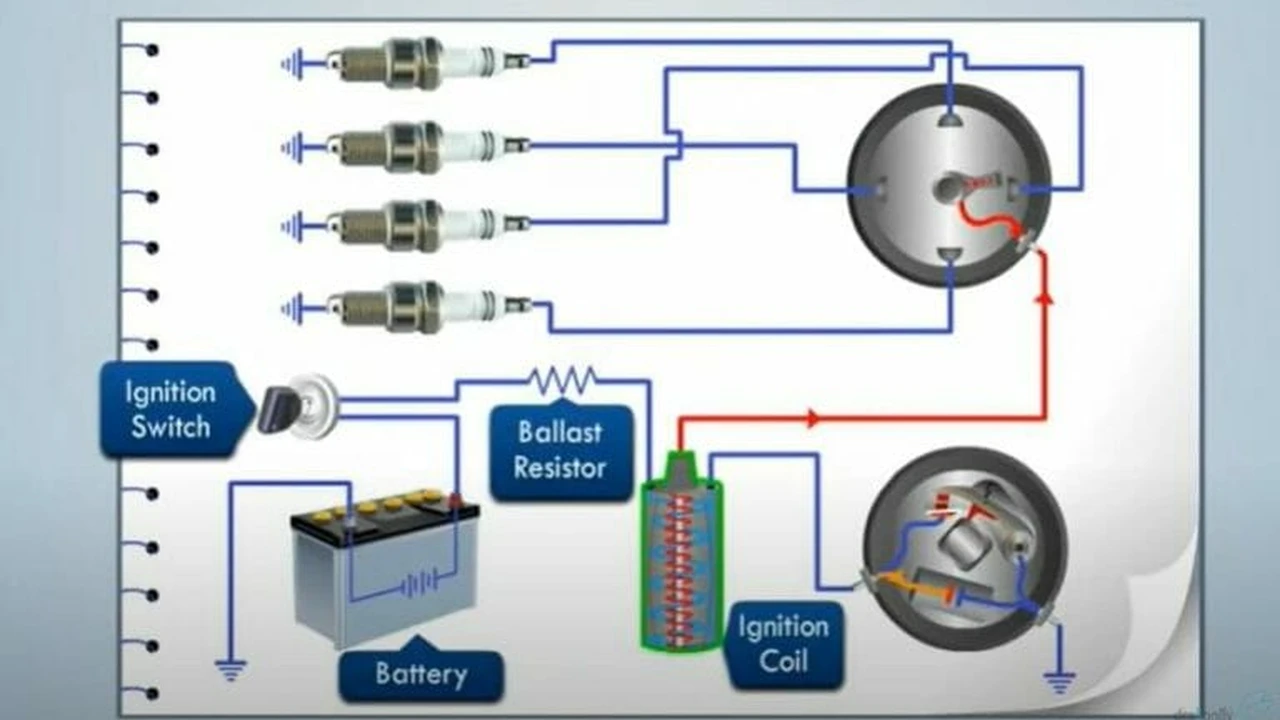7 Common ECU Mapping Mistakes to Avoid During Tuning

Avoid engine damage by learning from common ECU mapping mistakes. This article highlights 7 crucial errors to avoid when tuning your ECU, ensuring a safe and reliable performance upgrade. Protect your investment with proper tuning practices.
Introduction to ECU Mapping and Common Pitfalls
Alright, so you're diving into the world of ECU mapping? Awesome! It's a fantastic way to unlock hidden power and efficiency in your engine. But hold on a second, before you start tweaking things, it's crucial to know what *not* to do. ECU mapping can be tricky, and making mistakes can lead to some seriously expensive engine damage. This article is your guide to avoiding those common pitfalls, so you can tune your engine safely and effectively.
Mistake 1: Ignoring the Fundamentals of Engine Operation
You wouldn't try to build a house without understanding basic construction, right? Same goes for ECU mapping. Before you start messing with fuel maps and ignition timing, make sure you have a solid understanding of how your engine actually works. That means knowing about air-fuel ratios, ignition timing advance, knock, and the role of various sensors. Without this foundation, you're just guessing, and guessing is a recipe for disaster.
Why it's a problem: You might unknowingly create a dangerous condition, like running too lean (not enough fuel) which can cause overheating and detonation, or running too rich (too much fuel) which can foul spark plugs and damage catalytic converters.
The fix: Spend some time learning about engine fundamentals. Read books, watch videos, and talk to experienced tuners. Understanding the "why" behind the "what" is crucial.
Mistake 2: Not Backing Up Your Original ECU Map
This one's a classic. Imagine spending hours tweaking your ECU map, only to accidentally mess something up and lose all your progress. Or worse, brick your ECU! Always, *always* back up your original ECU map before making any changes. Think of it as your "restore point."
Why it's a problem: If something goes wrong, you'll have no way to revert to a working state. You could be stuck with a car that doesn't run, or worse, a damaged engine.
The fix: Most ECU tuning software has a built-in backup function. Use it! Save your original map to multiple locations, like your computer and a USB drive. Redundancy is your friend.
Mistake 3: Overlooking Data Logging During ECU Tuning Sessions
Tuning without data logging is like flying blind. You need to see what's actually happening inside your engine as you make changes. Data logging allows you to monitor parameters like air-fuel ratio, ignition timing, boost pressure, and coolant temperature in real-time. This information is essential for making informed tuning decisions.
Why it's a problem: You won't be able to identify potential problems, like knock or lean conditions, until it's too late. Data logging provides the feedback you need to make adjustments and optimize performance.
The fix: Use a data logging tool that's compatible with your ECU tuning software. Set up the tool to record the parameters you need to monitor. Analyze the data carefully and make adjustments based on what you see.
Mistake 4: Ignoring Air-Fuel Ratio (AFR) Targets
The air-fuel ratio is the most critical parameter for engine health and performance. Running too lean can cause detonation and engine damage, while running too rich can foul spark plugs and reduce power. You need to know the optimal AFR targets for your engine and your desired performance level.
Why it's a problem: Deviating from the optimal AFR range can lead to serious engine damage or reduced performance.
The fix: Research the recommended AFR targets for your engine. Use a wideband O2 sensor to monitor your AFR in real-time. Adjust your fuel maps to maintain the desired AFR under all operating conditions.
Mistake 5: Advancing Ignition Timing Too Aggressively
Advancing ignition timing can increase power, but it also increases the risk of knock (detonation). Knock is a destructive phenomenon that can quickly destroy your engine. It's crucial to advance timing carefully and listen for any signs of knock.
Why it's a problem: Knock can cause piston damage, rod bearing failure, and other serious engine problems.
The fix: Advance timing gradually and monitor for knock. Use a knock sensor or listen for audible knock. Reduce timing immediately if you detect any knock. Don't get greedy with timing advance!
Mistake 6: Failing to Account for Environmental Conditions
Temperature, humidity, and altitude can all affect engine performance. What works well on a cool, dry day might not work so well on a hot, humid day, or at high altitude. You need to account for these environmental conditions when tuning your ECU.
Why it's a problem: Changes in environmental conditions can affect air density and air-fuel ratio, leading to performance problems or even engine damage.
The fix: Use a weather station or online resource to monitor temperature, humidity, and altitude. Adjust your ECU map accordingly. Some ECU tuning software has built-in compensation tables for environmental conditions.
Mistake 7: Neglecting to Test and Verify Your ECU Map
Don't just assume that your ECU map is perfect after you've made some changes. You need to test and verify your map under real-world conditions. That means driving your car on the street or track and monitoring performance parameters. You also can use a Dyno to verify the ECU Map.
Why it's a problem: You might have overlooked something during the tuning process, or your map might not be optimized for all driving conditions.
The fix: Drive your car under various conditions and monitor performance parameters. Check for any signs of problems, like knock or lean conditions. Make adjustments to your map as needed. Consider dyno tuning for a more precise and controlled testing environment.
Beyond the Basics: Advanced ECU Mapping Considerations
Once you've mastered the fundamentals and avoided the common pitfalls, you can start exploring more advanced ECU mapping techniques. This includes things like closed-loop control, boost control, and variable valve timing optimization. However, it's important to approach these techniques with caution and do your research thoroughly.
ECU Tuning Software: Recommendations and Comparisons
Choosing the right ECU tuning software is crucial. Here are a few popular options:
1. Cobb Accessport:
Description: A user-friendly option with pre-loaded maps and data logging capabilities. Great for beginners.
Pros: Easy to use, wide range of supported vehicles, good community support.
Cons: Can be expensive, locked to one vehicle.
Use Case: Ideal for enthusiasts who want a simple and reliable tuning solution for their daily driver.
Price: $600 - $1200
2. HP Tuners:
Description: A more advanced option with a wide range of features and customization options.
Pros: Highly customizable, supports a wide range of vehicles, powerful data logging capabilities.
Cons: Steeper learning curve, requires more technical knowledge.
Use Case: Suitable for experienced tuners who want complete control over their ECU.
Price: $300 - $600 (plus credits per vehicle)
3. AEM Infinity:
Description: A standalone ECU that offers the ultimate in performance and flexibility.
Pros: Fully customizable, supports advanced features like traction control and launch control, highly reliable.
Cons: Very expensive, requires professional installation and tuning.
Use Case: Designed for high-performance race cars and custom engine builds.
Price: $1500 - $3000
Wideband O2 Sensors: Essential for Accurate Tuning
A wideband O2 sensor is an indispensable tool for ECU tuning. It allows you to accurately monitor your air-fuel ratio in real-time, which is essential for making informed tuning decisions. Here are a few popular options:
1. Innovate Motorsports MTX-L Plus:
Description: A reliable and accurate wideband O2 sensor with a digital display.
Pros: Easy to install, accurate readings, affordable.
Cons: None significant.
Use Case: A great all-around option for DIY tuners.
Price: $200 - $300
2. AEM 30-0300 X-Series Wideband UEGO Sensor Controller:
Description: A high-performance wideband O2 sensor with advanced features.
Pros: Very accurate, fast response time, supports data logging.
Cons: More expensive than other options.
Use Case: Suitable for experienced tuners who demand the highest level of accuracy.
Price: $300 - $400
Dyno Tuning: A Controlled Environment for Optimization
Dyno tuning is a process of tuning your ECU on a dynamometer, which is a machine that measures engine power and torque. This allows you to tune your engine in a controlled environment and optimize performance under various load conditions. Dyno tuning is typically performed by professional tuners, but it's a worthwhile investment if you're serious about maximizing your engine's performance.
Final Thoughts: Patience and Persistence are Key
ECU mapping is a complex and challenging process, but it can also be incredibly rewarding. By avoiding these common mistakes and taking a methodical approach, you can safely and effectively tune your engine for increased performance and efficiency. Remember to be patient, persistent, and always prioritize engine safety. Good luck, and happy tuning!
:max_bytes(150000):strip_icc()/277019-baked-pork-chops-with-cream-of-mushroom-soup-DDMFS-beauty-4x3-BG-7505-5762b731cf30447d9cbbbbbf387beafa.jpg)






